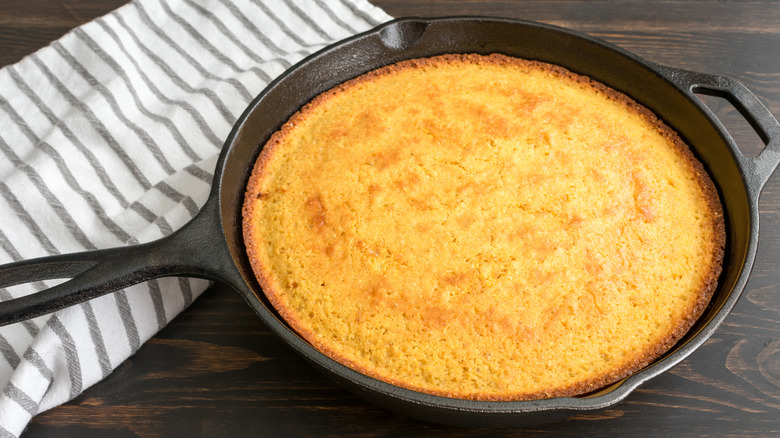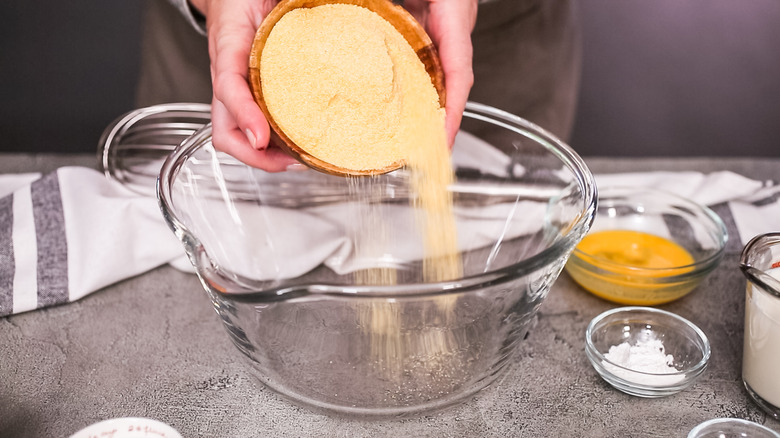The Ingredient Traditional Cornbread Never Uses
To understand American food culture wars between North and South, there's no better place than to start than in a kitchen. Battles are won and lost over regional BBQs, Maine lobster, Mississippi catfish, New York pizza, Nashville hot chicken, and all forms of deep-dish apple pie. And that's just the beginning. A dish might bear the same name but differ wildly from one region to the next, sometimes borrowing or blending bits and pieces from one another. But when it comes to cornbread, there's little compromise. The only way forward is to battle it out over a spitting-hot cast iron skillet — one filled with cornbread, of course.
Cornbread convictions run deep, characterized in a New York Times essay as being tied to tradition and a sense of solace. Particularly for Deep South communities, cornbread is the ultimate comfort food, with even the requisite cast iron skillet passed down from one generation to the next. In times of turmoil or unrest, many people cope by returning to tradition and traditional ways of doing things. Cornbread may seem inconsequential in the bigger picture, but in the little pictures we draw when troubled or uprooted, it still matters.
As one of the only breads available in early America, cornbread nurtured countless families, particularly in Southern states where corn crops flourished. Today's family cornbread recipes likely remain unchanged since inception, scribbled on flour-dusted scraps of paper or tucked into country-church cookbooks.
So, if traditional cornbread is so beloved, where's the controversy? It mostly comes down to a single ingredient.
Cornbread conundrum: sweet or savory
No self-respecting Southerner with genuine roots in Southern soil would ever drop sugar into a bowl of cornbread batter. That's a blanket statement, but one you'll definitely hear in traditional Deep South communities. When it comes to original cornbread recipes, no evidence exists of sugar being included in early American life. In fact, the Ocala StarBanner notes that cornbread likely predated the arrival of European settlers in America, with American Indians passing on knowledge of how to dry and grind corn into cornmeal for making bread, adding only salt and water. However, Southern Living (SL) does peel back the sugar curtain a teensy bit. Calling the sweet-or-not cornbread controversy a screaming-hot daily topic among Southern Living staff members, including the SL Test Kitchen, the publication reluctantly admitted after a Facebook Face-off between readers that a smidgen of sugar just might be okay.
On the other side of the cornbread chasm, Northern versions almost always contain sugar. Crescent Dragonwagon, Vermont author of "The Cornbread Gospels," calls Northern cornbread cake-like, light, and sweetened with sugar, molasses, or even maple syrup, notes Chef's Corner Store. It also bypasses the traditional cast iron skillet and has a higher percentage of flour to corn meal, Dragonwagon tells the Gainesville Times. As for her take on which is the "real" cornbread? Neither, she says. Since baking soda and baking powder weren't available until the 1700s, the earliest traditional cornbread would have been more like a corn tortilla and made without sugar.

